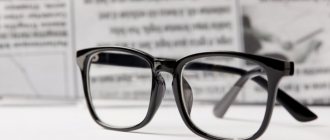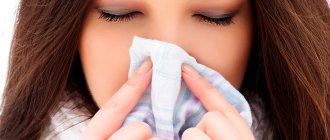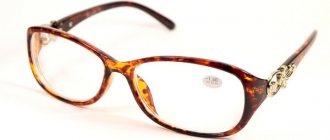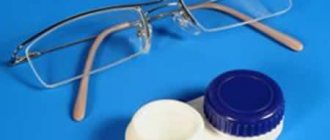Basic Rules
Improper washing can damage the product by disrupting the fiber structure. There are several rules that will help you understand how to wash microfiber correctly:
- the water temperature should not exceed 40-600;
- do not boil;
- do not dry in a car or on a radiator;
- You cannot iron such products;
- Do not use bleach, especially with chlorine, to remove stains.
It is also important to know how to wash such products. It is recommended to use laundry soap or liquid laundry detergent. The powder is difficult to rinse out of microfiber fibers and will make the fabric hard.
Advice! It is not recommended to add conditioner. It also clogs the fibers, after which you will have to rinse the item thoroughly.
When choosing sun protection accessories, as a rule, there is no question of which glasses lenses are best to choose. Here the main emphasis is usually on trends and fashion trends. But it is also important to pay attention to quality and know how to care for such glasses.
Rules for caring for sunglasses are given below:
- the case will protect the accessory from mechanical damage;
- you need to take off and put on glasses carefully, since the plastic frame, which is present in most models, can easily break;
- The microfiber cloth included in the kit is an excellent cleaning tool;
- You can wash your glasses under warm running water without using soap, but then you need to let them dry or wipe them with a dry cloth.
Napkins
On sale you can find a large variety of wipes for cleaning glasses. All of them are divided into two main types: reusable and disposable.
Reusable
Typically, reusable wipes are made of microfiber. This material perfectly removes any dirt and leaves no streaks. These wipes can be used without special liquid cleaners, making them easy to use. To store them, you must use a special case, and when they become dirty, they must be washed.
Disposable
The cost of disposable napkins is slightly higher than reusable ones. However, they differ in a number of advantages:
- No need for regular washing.
- Many disposable wipes are impregnated with special antibacterial solutions.
What should you not use?
There are always a lot of household products that seem to be able to be used to clean the surface of glasses. So, some people choose handkerchiefs, scraps of fabric, clothes as napkins for them, and ammonia or simple alcohol, vinegar and liquid for washing glass and mirrors as products.
Why is it not worth wiping lenses with them? Although fabric, clothing, and handkerchiefs may be soft to the touch, they can scratch the soft surface of the glasses. Microcracks may not be visible at first glance, but dirt will accumulate in them.
Alcohol or vinegar does not make glass cleaner, and can even harm plastic. Window cleaning liquid is an extreme option that can only be used in extremely rare cases due to the large number of destructive substances in its composition.
What should you not clean your glasses with?
If your lenses are equipped with an anti-reflective coating designed to protect them from UV rays or computer monitor radiation, you should never use the following products to clean them:
- Ammonia.
- Caustic fat-dissolving agents.
- Glass cleaning products.
- Bleach.
When cleaning polycarbonate lenses, do not use dishwashing detergents, glass cleaners, alcohol, or too hot water.
To remove dirt from any lens surface, including glass, do not use abrasive powders, paper towels, vinegar, or rough or dirty cloths. Even soft cotton fabric, the surface of which contains a lot of dust and dirt, can lead to scratches. Dust particles and dried dirt can easily damage even the most durable glass.
If you want to maximize their service life and are confused about how to wipe your glasses to avoid streaks, then remember that using the following products is not recommended:
- Fabric that was at hand.
- The edge of a shirt, a handkerchief or a rag.
- Special paper napkins that contain coarse fibers.
- Ammonia.
- Bleach.
- Vinegar.
- A liquid intended for washing glass.
How to wash microfiber in a washing machine
Microfiber can be washed in a washing machine. If you choose the right detergent and mode, the item can withstand up to 500 washes. Simple recommendations will help you understand how to wash microfiber in a machine correctly:
- things made from this fabric are usually bulky, so you shouldn’t overload the machine, it should be a quarter empty;
- It is best to set the temperature to 30-400;
- It is advisable to choose a delicate mode without spinning;
- It is not recommended to load things that can fade with microfiber; this fabric easily absorbs paint;
- It is advisable to wash such products separately, since all the lint and hairs from other fabrics will collect on the surface of the microfiber;
- It is best to use a liquid detergent without bleach or conditioner.
If the item is heavily soiled, you should not increase the amount of detergent; it is better to first soak it for 10-12 hours in a detergent solution. You can also soap the stain with laundry soap, leave it for an hour, and then wash it in the machine.
How to store vision glasses?
It is worth understanding that glasses intended to be worn for pathologies of visual function require careful handling, as well as regular care. Having figured out how to clean glasses for vision correction, you should pay attention to their proper storage.
The rules for storing and maintaining vision glasses are as follows:
- storage only in a special case when not in use (this will protect the accessory from mechanical damage);
- put on and take off glasses with both hands, since the fragile frames can easily become warped;
- the lenses are wiped with a special soft microfiber or suede cloth, which, as a rule, goes on sale along with the accessory;
- You should periodically wash your glasses with soapy water and running water without using active cleaners or acetone;
- a sharp change in temperature can lead to brittleness and damage the integrity of the glasses;
- Do not place the accessory on a hard surface, as there is a high risk of damage to the lenses.
How to protect your glasses from dirt
In order not to think about how to clean your glasses in the future, you need to study certain recommendations that will help protect your glasses from further contamination:
- Glasses should only be stored in a special case.
- The case must be kept clean. When crumbs or dust first appear, you need to get rid of them.
- People who try to lead an active lifestyle must attach a chain or rope to their glasses.
- To remove or put on glasses, you only need to hold them by the ears.
- Be careful not to expose your glasses to harmful chemicals.
- It is not recommended to repair optics yourself. It is better to turn to real professionals in their field.
- To prevent windows from fogging up in the cold season, you should use special wipes and sprays.
- If the glass has scratches that cannot be repaired, then this can negatively affect your vision.
- Eyeglass lenses need to be replaced once or twice a year.
We suggest you familiarize yourself with how and what to clean a refrigerator - 10 super ways.
These are the basic tips that will help you get rid of the appearance of dirt on your glasses. Now it's time to find out what you shouldn't use to wipe your glasses.
Useful tips
When cleaning plastic frames of glasses, regardless of their purpose, pay attention to the gaps where a lot of dirt collects. It can be removed using cotton swabs.
Glasses wipes should be washed regularly to prevent dirt from collecting on them.
To avoid losing or breaking the accessory, you can hang it on a special chain.
After water procedures, glasses should dry in a vertical position; as they dry, it is important to wipe them with a dry soft cloth.
After cleaning, check its quality. Take the accessory by the handles and hold it up to the light: if there are no streaks on the lenses, then the cleaning process was completed correctly. If not, repeat it.
Types of glasses for glasses
According to statistics, a quarter of all inhabitants of our planet wear glasses. This is why it is so important to know the features of glasses care. But before you understand the rules and methods of cleaning, it is worth knowing what they can be made of, since the features of use and maintenance largely depend on the material of manufacture.
What can eyeglass lenses be made of?
- Glass. Their main advantage is that they are durable, reliable, and also help with various pathologies of visual function in humans. They are durable, but it is important to properly and daily care for such an accessory. At the very least it needs to be wiped down. The disadvantages include fragility, since it is glass, quite heavy weight, and not a very aesthetically beautiful appearance. Although recently many models for vision correction have appeared that can become a fashion accessory.
In order to figure out which glasses lenses are best to choose, you should visit an ophthalmologist, and then choose from the available model range.
- Plastic. Glasses made of plastic are much cheaper than their glass counterparts. They are lighter and thinner, but the glass itself is easily susceptible to mechanical stress, since any scratch, even a minor one, can ruin the appearance of the accessory.
- Plastic with anti-reflective coating. These glasses have the same advantages and disadvantages as accessories made from regular soft plastic, but they require more careful care.
Special care products for glasses
When purchasing glasses, you should definitely ask what products can be used to clean the selected model. Products intended for cleaning glasses can be purchased at specialized optical shops or pharmacies. Today, there is a considerable assortment of all kinds of cleansing products from different manufacturers on sale, so each person can easily select the product that is suitable for him.
Liquid products
Lens cleaning fluids are gentle, and some have antistatic properties or contain anti-fog components. To keep the glass streak-free and crystal clear, you can use the following products:
- Good Look Spray - can be used for both prescription lenses and sunglasses. The product effectively removes dirt and improves the light transmission properties of lenses, and also helps reduce fogging. Suitable for both plastic and glass. The drug is easy to use and economical in consumption. Thanks to the compact bottle, you can always carry the product with you and quickly clean your glasses if necessary. Its cost is 180-210 rubles.
- HD is a spray from a Dutch manufacturer designed for cleaning glass optical lenses. The product can be used to wipe both glass and glasses frames, as well as camera lenses, magnifiers, and cameras. The average cost of the drug is 400 rubles.
- Spray Clean is a spray product from an Italian manufacturer that has antistatic properties. Suitable for cleaning all types of lenses, including polycarbonate and lenses with anti-reflective coatings. The average cost of a spray is 200 rubles.
As improvised means at home you can use:
- Liquid soap.
- Shower gel.
- Dishwashing liquid.
- Glass cleaner (can only be used for glass lenses, since most such preparations may contain alcohol and other aggressive substances).
- Shampoo.
We suggest you familiarize yourself with How to wash eco-leather (artificial leather, faux leather): is it possible in a washing machine, how to properly manually, dry cleaning rules
If desired, you can make a soap solution from regular toilet soap. To prepare a soap solution from solid soap, shampoo, and shower gel, you will need very little product. To better remove dirt and grease from the glass surface, it is recommended to use slightly heated water.
Handwash
Small microfiber items, as well as those that are not heavily soiled, can be washed by hand. This fabric is easy to wash. For washing, you can use laundry or baby soap, as well as liquid detergent.
If you just need to refresh an item, rinse it in a soapy solution, then in clean water. There is no need to twist it too much, microfiber dries quickly. If the item is dirty, you can soak it in a detergent solution for 1-2 hours. For more serious stains, it is recommended to soak microfiber items in a hot soapy solution. Its temperature should be no more than 50-600. Immerse items in the solution and leave overnight. In the morning all that remains is to rinse.
Advice! It is not necessary to rub the stain - you can disrupt the fiber structure. If it does not wash off, you need to soap and rinse again.
Cleaning rags are often made from microfiber. They are very comfortable, but get dirty quickly. It is recommended to wash them separately.
Method one
You can wash microfiber cloths with a paste of baking soda and water. You need to take 1-2 tablespoons of baking soda and add warm water little by little until a thick paste is formed. You need to wash it like this:
- wet the cloth;
- coat thickly with paste;
- leave for an hour;
- immerse in warm soapy solution;
- wash;
- rinse under running water.
Method two
Heavy stains can be removed with lemon juice. What is needed for this:
- pour 5-7 liters of warm water into a basin;
- squeeze the juice from half or a whole lemon into it;
- immerse the napkins and leave for 1-2 hours;
- wash in the usual way.
Washing microfiber items is easy. If you follow these simple recommendations, they will last a long time and will not lose their properties.









